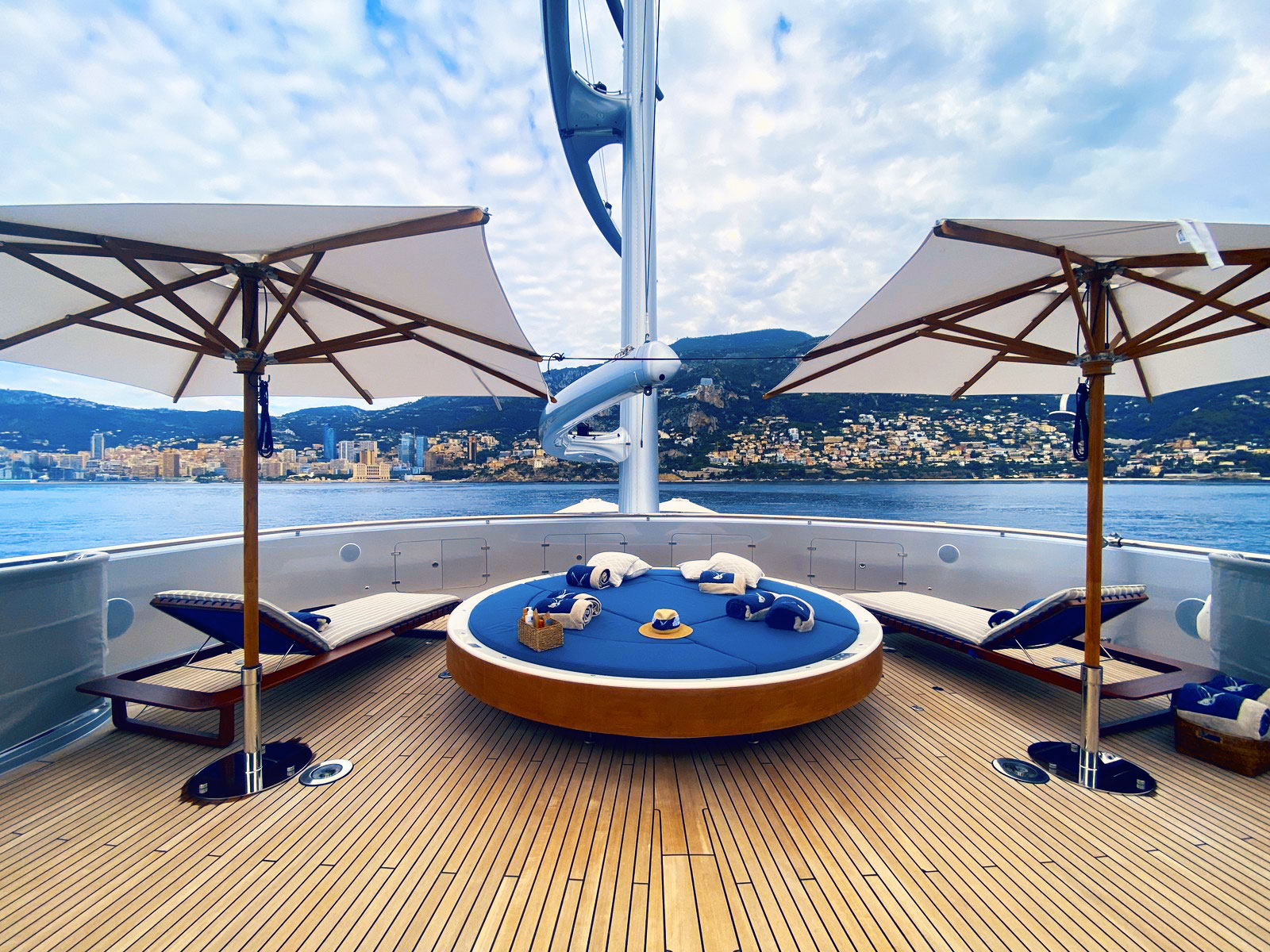A unique yatch
in the world.
Embrace a voyage of limitless advancement.
Technologies


Square rigs have long been recognized for their speed potential, although they struggle sailing upwind—where sloops and schooners fare better. In the 1960s, the German government developed the DynaRig to address this issue, but it never went beyond wind tunnel tests. In 2001, an American yachtsman revived and refined the concept, collaborating with naval architect Gerard Dijkstra and composite specialist Damon Roberts to create the Maltese Falcon’s “FalconRig.” Carbon fiber’s fatigue-resistant properties made this innovative rig feasible, and with Fabio Perini’s support, they successfully tested a fully automated method to handle a vast sail area.
Sustainability


The Maltese Falcon embodies a vision of sustainability thanks to its impressive 2,400 m² of sail, which can be fully deployed in just six minutes and allow a cruising speed of 12-14 knots without relying on the engines. The complete overhaul of the machinery systems, including the onboard power generators, ensures minimal fuel consumption and drastically reduces both diesel usage and exhaust emissions. Moreover, the crew—carefully selected among the best professionals in the industry—is firmly committed to preserving the marine environment, adopting responsible practices and promoting a conscientious approach at every level of the sailing experience.
Security


A robust cybersecurity system has been implemented to safeguard all onboard communications. The crew maintains a 24-hour watch, ensuring continuous monitoring and an immediate response to any potential threats.
Technologies


Square rigs have long been recognized for their speed potential, although they struggle sailing upwind—where sloops and schooners fare better. In the 1960s, the German government developed the DynaRig to address this issue, but it never went beyond wind tunnel tests. In 2001, an American yachtsman revived and refined the concept, collaborating with naval architect Gerard Dijkstra and composite specialist Damon Roberts to create the Maltese Falcon’s “FalconRig.” Carbon fiber’s fatigue-resistant properties made this innovative rig feasible, and with Fabio Perini’s support, they successfully tested a fully automated method to handle a vast sail area.
Sustainability


The Maltese Falcon embodies a vision of sustainability thanks to its impressive 2,400 m² of sail, which can be fully deployed in just six minutes and allow a cruising speed of 12-14 knots without relying on the engines. The complete overhaul of the machinery systems, including the onboard power generators, ensures minimal fuel consumption and drastically reduces both diesel usage and exhaust emissions. Moreover, the crew—carefully selected among the best professionals in the industry—is firmly committed to preserving the marine environment, adopting responsible practices and promoting a conscientious approach at every level of the sailing experience.
Security


A robust cybersecurity system has been implemented to safeguard all onboard communications. The crew maintains a 24-hour watch, ensuring continuous monitoring and an immediate response to any potential threats.








































